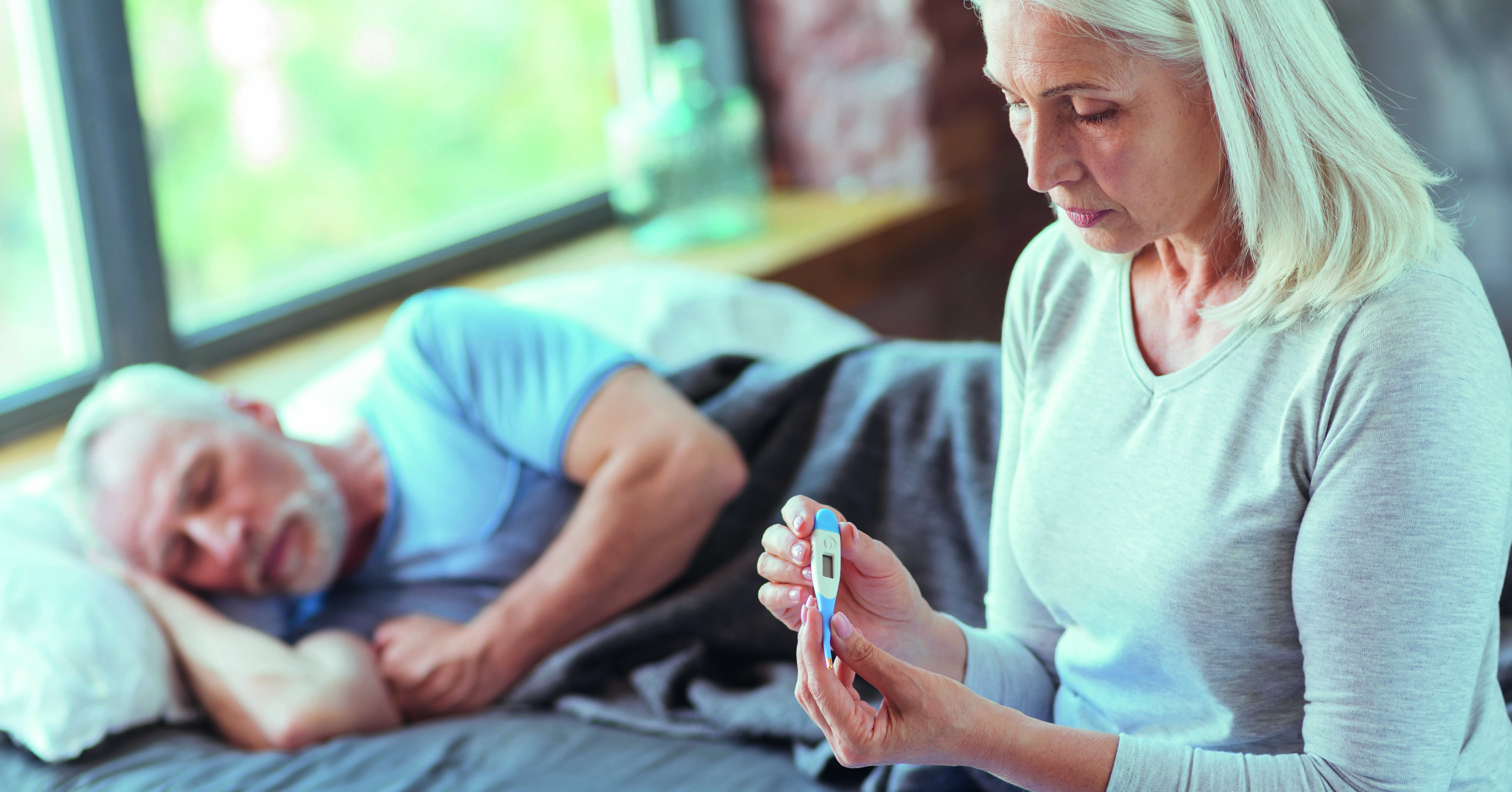
Many consider Legionnaires’ disease to be a rare infection. However, it’s much more common than we may initially think. In recent years, there has been a rapid increase in cases of Legionnaires’ disease worldwide driven by factors such as degrading infrastructure, ageing populations and climate change.
In 2018, 9,933 cases of Legionnaires’ disease and Legionellosis were reported in the USA alone but the actual number is estimated to be high as 70,000 cases per year.
Furthermore, the Centers for Disease Control and Prevention (CDC in the United States) estimate that over 90% of Legionnaires’ disease and Legionellosis cases go undetected, unreported or misdiagnosed. In the UK, 1 in 6 cases of pneumonia are thought to be caused by Legionella bacteria.
Download our top tips checklist for reducing Legionella risk in your home.
What is Legionella, Legionnaires’ disease and Legionellosis?
Legionella is a pneumonia-causing pathogen, which if inhaled by humans, can lead to fatal respiratory diseases.
It is naturally occurring and widespread in natural water sources but when it enters man-made systems it can lead to explosive outbreaks of Legionnaires’ disease, a severe and potentially fatal pneumonia-like disease, and Pontiac fever, a milder-flu like illness.
If water systems, such as cooling towers, whirlpool spas, air misters and showers are not well maintained they can soon become serious biological hazards, putting customers, staff and the general public at risk.
So, what can you do to protect yourself and your loved ones from Legionnaires’ disease/ Legionellosis?
While Legionella bacteria can pose a risk to anyone, some people are more susceptible to infection than others. The CDC states that risk groups are:
- Those over the age of 50
- Smokers
- People with weakened immune systems
- People with chronic lung disease
- People with cancer
- People with diabetes, kidney failure or liver failure.
Whether you fall into this group or not, there are several measures that you can take to reduce Legionella risk. Our Hydrosense Legionella specialists have compiled a list of our top tips which you can implement to keep you and your loved ones safe.
1. Flush and maintain domestic hot water systems
Still water and warm temperatures can provide Legionella with ideal conditions for growth and spread. To reduce risk from showers and taps in your home, it is important to regularly flush hot / warm water lines to prevent stagnation.
Dr Tom Makin, a microbiologist who has spent 30 years studying Legionnaires’ disease outbreaks, does this by turning on his system and quickly leaving the room, shutting the door behind him. He leaves the system running for around 20 minutes before re-entering the room (with his mouth covered) to turn off the system. He will then leave the room again for a further 20 minutes while any aerosols disperse from the air.
He says it is very important to do this, especially after returning home from holiday, when the water in your pipes has been stagnant. It is also important to regularly clean and disinfect showerheads and remove any visible sediment or slime, which can harbour Legionella bacteria and provide the bug with nutrients and protection.
2. Install point of use filters on your taps and showers
A point of use filter is a filtering unit which can be attached to showers, taps and faucets. Inside, a membrane filter removes particulates or microorganisms from the water. These units provide a physical barrier between Legionella bacteria present in your system and you.
Bear in mind however, they must be replaced regularly. Most units can be used for around 31-62 days, depending on the model and manufacturer. As a result, they tend to be used most frequently in hospitals, care homes and by high-risk individuals.
3. Clean and disinfect domestic evaporative air conditioners
To reduce Legionella risk, domestic evaporative air conditioners should only be used with a clean, fresh water supply and should be cleaned periodically.
The Western Australian Department of Health recommends:
- Cleaning or replacing the units filter pads,
- Cleaning, scrubbing and disinfecting all waterways (incl. bleed of system and slump) using a chlorine-based household bleach,
- Closing the units drains and filling with fresh water.
4. Stay safe in your garden
In 2017, a retired builder from Norfolk (United Kingdom) lost his life to Legionnaires’ disease after inhaling a droplet of water contaminated with Legionella from his garden hose. There is speculation that the hose had been left lying in the sun and that the water inside had become stagnant and warm, thus promoting Legionella growth.
A recent study carried out by a UK research facility found that up to 95% of British garden butts could be infected with Legionella. To reduce risk, we recommend watering plants with a watering can, so minimise the amount of aerosol and pray created. Frequently disinfecting garden butts and keeping hoses out of direct sunlight or warm conditions and draining any residual water immediately after use can help to reduce Legionella growth and health risks.
The Royal Horticultural Society also advises against using any stored water that is above 20C for sprinklers or irrigation.
5. Clean nebulisers and humidifiers daily
The Western Australian Department of Health recommends rinsing nebulisers after each use and washing the chamber and mask every day, using warm water and soap. Nebuliser filters need to be changed regularly.
Refer to your manufacturer’s instructions for more detail on managing and servicing your unit.
They also recommend that humidifiers are emptied and cleaned with soap every day and that only distilled or water that has been boiled is used in these systems.
6. Maintain domestic spas and hot tubs
Spa baths and hot tubs provide Legionella bacteria with ideal temperature conditions for growth. They also create a significant amount of aerosol and spray which can spread Legionella bacteria. So, it is important to regularly clean, disinfect and test these systems.
It’s important to circulate hot tub water often to prevent stagnation. Some models have automated circulation built in; however, Swim University recommends that if your hot hub doesn’t have this function, you should turn the system on for 15 -20 minutes twice a day. This will reduce stagnation and pass your hot hub water through your system’s filters, removing debris and sediment.
They also recommend wiping your spa down weekly and giving it a deeper clean and drain every 3 – 4 months. Not forgetting to rinse, spray and soak your filters.
It is also important to test and adjust your hot tubs water chemistry. You’ll first want to take a baseline reading by filling your hot tub and running a pH and alkalinity test and noting the levels.
Your hot tubs pH should be around 7.4 – 7.6. Levels below this will be too acidic (which can cause irritation and damage to your system). Levels above this will be too basic and could decrease the efficacy of your disinfectant. For alkalinity, 125 parts per million (ppm) -150 ppm is considered appropriate.
Make sure to use a disinfectant or biocide. Follow the manufactures instructions carefully when adding to your system.
Test your systems pH and alkalinity weekly with pool and spa test strips (which can easily be found online) and add pH increaser, pH decreaser, alkalinity increaser and biocide as needed.
7. Test high-risk areas periodically
While these tips should help you keep your water systems spick and span, it’s important to remember that Legionella can be extremely challenging to remove and control. The only way to know for sure that your cleaning efforts are mitigating possible future health impacts, is to test your system.
There are now easy and quick ways to test for Legionella bacteria in water systems and on surfaces. The Hydrosense Legionella Test kit range allows you to test high-risk areas in only 25 minutes. It’s reliable, it’s fast and it’s easy to use.
The Hydrosense testing method, when combined with the latest smartphone technology, offers a significantly improved protection profile for employees, customers and the general public.
Download our top tips checklist for reducing Legionella risk in your home.
Find out more about our test kits here.

More Like This:
10 Top Tips for Reducing Legionella Risk in Your Business
Your Complete Guide to a Legionella Risk Assessment
Long Term Side Effects of Legionnaires' Disease
